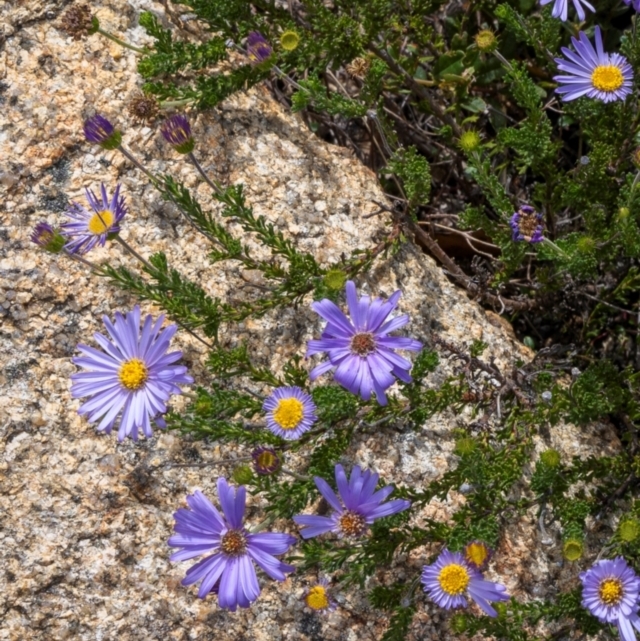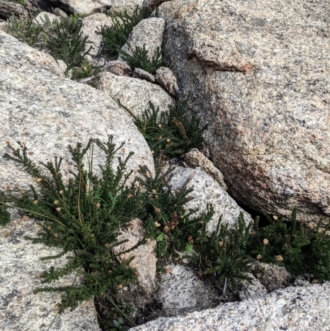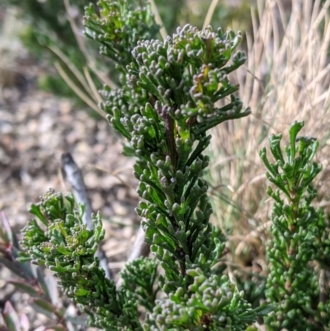Olearia heloderma (Daisy Bush (Australian National Herbarium))
A distinctive species distinguished from other species of Olearia by the following combination of characters: root-suckering low shrub; indumentum densest on stems and peduncles and dominated by flagellate, eglandular hairs; leaves alternate, narrowly cuneate to spatulate, crowded, rather short with distinctive lobing and glandular verrucose submargins; involucral bracts with inconspicuously glandular verrucose midvein; ligules violet, cypsela 1.7–2.3 mm long, 6–9-ribbed and with appressed or antrorse white duplex hairs throughout.
Olearia heloderma occurs in mountainous granitic terrain at elevations of 1450 to 1800 m. Most occurrences are on gentle to steep slopes of various aspect, but it has also been found on ridge tops. Plants grow in gravelly loam derived from decomposing granite, often amongst outcropping rocks
All known populations of Olearia heloderma o ccur within conservation reserves. I n the ACT i t occurs within the Bimberi Wilderness zone of Namadgi National Park. In NSW it occurs within Kosciuszko National Park, Scabby Range Nature Reserve and Yaouk Nature Reserve.
The species is currently not listed as threatened in New SouthWales or the Australian Capital Territory, however assessment of its conservation status is hampered by limited knowledge of population sizes and threatening processes. Data associated with herbarium collections indicate that some sites have few plants, whilst it is common at other sites. The species appears to resprout post-fire, however no data are currently available on post-fire seedling recruitment.
https://openjournals.library.sydney.edu.au/TEL/article/view/17735/15504
Olearia heloderma is listed in the following regions:
Species information
- Olearia heloderma Scientific name
- Daisy Bush (Australian National Herbarium) Common name
- Not Sensitive
- Rare or uncommon native
- Non-Invasive
- Up to 1744.99m Recorded at altitude
- Machine learning
-
In flower
- External link More information
-
Synonyms
Olearia sp. Rhizomatica (I.R.Telford 11549) Olearia sp. Rhizomatica
Follow Olearia heloderma
Receive alerts of new sightings
Subscribe
























